|
While scientific applications require CCD detectors with maximum
quantum efficiency, very low noise, high dynamic range and linear
response to light, astro-photographers rather appreciate anti-blooming
to be able to acquire wide-field images with bright stars without
blooming spikes and electronic shutter for very short exposures of
Moon and planets. Some astro-photographers also prefer
single-shot-color cameras not to bother with filters and combination
of resulting images from individual color images. New CCD cameras
G2-2000 and G2-4000 provide all these features.

G2 CCD camera head Both camera models, based on Kodak KAI CCDs, share
important features with the Kodak KAF CCD based G2-0402, G2-1600 and
G2-3200 models intended for scientific applications and narrow-band
imaging:
Compact camera head, small and lightweight enough to be
attached even to small telescopes. Hight-quality, very low-noise electronics for images with
maximum S/N and without artificial gradients and other
artifacts. Efficient and precisely regulated CCD chip cooling up to
50 °C below ambient
temperature. Integrated all-in-one design with USB and power connectors
directly on the camera head. Integrated shutter not to bother with covering the telescope
when taking dark frames. Integrated filter wheel for standard filters to take (L)RGB
or narrow-band images. Single-voltage power supply enabling operation from
12V battery or “brick” adapter. Fast image transfer over High-speed USB connection to the
host PC with Plug and Play driver installation. Wide choice of various adapters for all common standards of
telescopes, coma-correctors, focal reducers or field flatteners,
microscopes, photographic lenses etc. Robust construction to sustain every-day usage. Rich software support.
Other features are especially important for
astro-photographes:
Strong anti-blooming gates ensure proper images of bright
stars in the field of view without blooming spikes. Electronic shuttering allows very short exposures of bright
objects like Moon and the planets. Fast windowing allows reading of arbitrary detector sub-frame
faster than in the case of KAF CCD detectors. Single-shot color camera variants with advanced multi-pass
color (Bayer) pattern demosaicing in software.
G2 CCD series with Kodak KAI CCDs include four models:
| Model |
CCD Chip |
Color mask |
Resolution |
Pixel size |
Imaging area |
Download time |
| G2-2000 |
KAI-2020 Monochrome |
None |
1604 × 1204 |
7.4 × 7.4 μm |
11.9 × 8.9 mm |
~ 2.6 s |
| G2-2000C |
KAI-2020 Color |
Bayer RGBG |
1602 × 1202 |
7.4 × 7.4 μm |
11.9 × 8.9 mm |
~ 2.6 s |
| G2-4000 |
KAI-4022 Monochrome |
None |
2056 × 2062 |
7.4 × 7.4 μm |
15.2 × 15.3 mm |
~ 5.7 s |
| G2-4000C |
KAI-4022 Color |
Bayer RGBG |
2054 × 2060 |
7.4 × 7.4 μm |
15.2 × 15.3 mm |
~ 5.7 s |
G2CCD cameras are designed to work in cooperation with a
host Personal Computer (PC). As opposite to digital still cameras,
which are operated independently on the computer, the astronomical
slow-scan, cooled cameras usually require computer for operation
control, image download, processing and storage etc. To operate G2
CCD camera, you need a computer which:
Is compatible with a PC standard. Runs a modern 32-bit Windows operating
system. Provides at last one free USB port.
G2 CCD Cameras Technical Specifications
CCD Chip
G2-2000 and G2-4000 cameras use low noise Kodak KAI
Interline Transfer CCD detectors. Advanced manufacturing
techniques like transparent electrodes and microlensing ensure
maximum quantum efficiency of monochrome models 55%. The
inherent dark current as well as read noise is very low, so
the resulting image S/N ratio is very good.
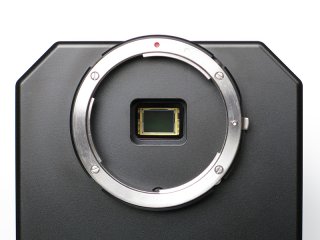
Kodak KAI-2020 inside the G2-2000 CCD
camera Model G2-2000 and G2-2000C
G2-2000 model uses 2 MPx Kodak
KAI-2020 CCD chip.
| Resolution |
1604 (H) × 1204 (V)
pixels |
| Pixel size |
7.4 μm
(H) × 7.4 μm (V) |
| Imaging area |
11.9 mm (H) × 8.9 mm (V) |
| Full well capacity |
~40,000 e- |
| Dark current |
40 e-/s/pixel at 40 °C |
KAI-2020 CCD chip specifications KAI-2020 CCD chip and its Quantum
Efficiency Model G2-4000 and G2-4000C
G2-4000 model uses 4 MPx Kodak
KAI-4022 CCD chip.
| Resolution |
2056 (H) × 2062 (V)
pixels |
| Pixel size |
7.4 μm
(H) × 7.4 μm (V) |
| Imaging area |
15.2 × 15.3 mm |
| Full well capacity |
~40,000 e- |
| Dark current |
40 e-/s/pixel at 40 °C |
KAI-4022 CCD chip specifications KAI-4022 CCD chip and its Quantum
Efficiency Camera Electronics
16-bit A/D converter with correlated double sampling
ensures high dynamic range and CCD chip-limited readout noise.
Fast USB interface ensures image download time within seconds.
Maximum length of single USB cable is 5 m. This length can be extended for instance
to 10 m by using single USB hub
or USB active extender cable. Up to 100 m extension can be achieved with
third-party extender.
| ADC resolution |
16 bits |
| Sampling method |
Correlated double sampling |
| Read modes |
Standard |
| |
Low-noise |
| Horizontal binning |
1 to 4 pixels |
| Vertical binning |
1 to 4 pixels |
| Sub-frame readout |
Arbitrary sub-frame |
| Computer interface |
USB 2.0 High Speed |
| |
USB 1.1 Full Speed compatible |
Camera electronics specifications Image download time depends on the CCD chip used in
particular camera model. Also the read noise depends on the
chip as well as on the read mode.
Standard read mode provides system read noise approx.
1 e- above CCD chip read
noise. ULN (ultra low-noise) read mode is somewhat slower
(approx. 1.2×), but ensures system read noise equal
or smaller than the manufacturer-specified chip read
noise.
Model G2-2000
| Gain |
0.4 e-/ADU
(1 × 1 binning) |
| |
0.8 e-/ADU (other
binnings) |
| System read noise |
7 e- RMS (LN
read) |
| |
9 e- RMS (standard
read) |
| Full frame download |
3.1 s (LN read) |
| |
2.6 s (standard read) |
G2-2000 electronics specifications Model G2-4000
| Gain |
0.4 e-/ADU
(1 × 1 binning) |
| |
0.8 e-/ADU (other
binnings) |
| System read noise |
7 e- RMS (LN
read) |
| |
9 e- RMS (standard
read) |
| Full frame download |
6.8 s (LN read) |
| |
5.7 s (standard read) |
G2-4000 electronics specifications Notes:
Binning can be combined independently on both
axes Download times are valid for USB 2.0 host and may vary depending on host
PC. Times stated here were measured on
1.5 GHz
Pentium M based laptop computer. Download times
can be somewhat longer when connected to USB 1.1 host.
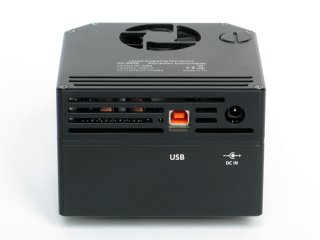
Power and USB connectors on the bottom of the
camera head Chip Cooling
Regulated two-stage thermo-electric chip cooling up to
50 °C below ambient temperature
with forced air cooling and 0.1 °C temperature precision ensure very low
dark current for long exposures.
| CCD chip cooling |
Thermoelectric (Peltier modules) |
| TEC modules |
Two stages |
| Max. delta T |
50 °C below ambient
maximum |
| |
45 °C below ambient
typical |
| Regulation precision |
0.1 °C |
| Hot side cooling |
Air cooling (50 mm
fan) |
Chip cooling specifications 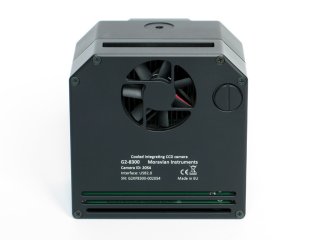
Fan and air output vents on the back side of the
camera Notes:
It is not recommended to cool the chip to the maximum
temperature difference, else the camera cannot guarantee
temperature stability when the ambient air temperature
rises. It is usually practical to set the temperature so the
cooling utilization varies around 90%. This provides enough
reserve in cooling power to keep the CCD temperature even if
the ambient temperature rises several degrees
Celsius. Water-assisted cooling is available for all G2CCD
cameras. Contact the manufacturer for details. The cooling performance depends on the environmental
conditions and also on the power supply. If the power supply
voltage drops below 12 V, the
maximum temperature difference is lower. One 50 mm fan is used in G2 cameras revision 3
and higher. Older revisions used two 40mm fans.
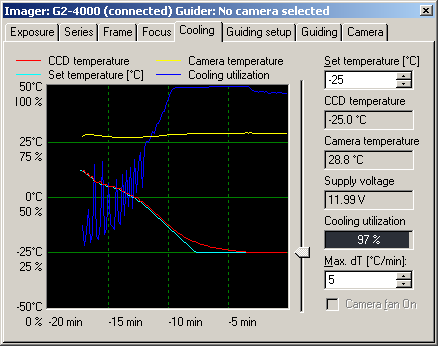
Temperature in the CCD chamber can drop up to
-50°C Power supply
The 12 V DC power supply adapter enables camera
operation from arbitrary power source including batteries,
wall adapters etc. Universal 100–240 V AC/50–60 Hz,
60 W “brick” adapter is
supplied with the camera. Although the camera power
consumption does not exceed 30 W,
the 60 W power supply ensures
noise-free operation.
| Camera head supply |
12 V DC |
| Camera power consumption |
15 W without
cooling |
| |
40 W with 100%
cooling |
| Adapter input voltage |
100-240 V AC/50-60 Hz |
| Adapter output voltage |
12 V DC/5 A |
| Adapter maximum power |
60 W |
Power supply specifications Notes:
Camera power consumption is measured on the AC outlet
of the 12 V power
supply. The camera contains its own power supplies inside, so
it can be powered by unregulated 12 V DC power source—the input voltage can be anywhere between 10
and 14 V. However, some
parameters (like cooling efficiency) can degrade if the
supply drops below 11 V. G2 CCD camera measures its input voltage and provides
it to the control software. Input voltage is displayed in
the Cooling tab of the CCD Camera
control tool in the SIPS. This feature is important
especially if you power the camera from batteries.
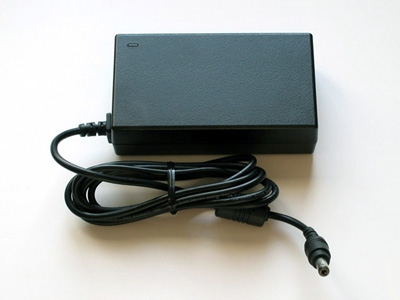
12 V DC/5 A power
supply adapter for G2CCD Camera Warning: The power connector on the camera head uses
center-plus pin. Although all modern power supplies use this
configuration, always make sure the polarity is correct if you
use own power source. Mechanical Specifications
Compact and robust camera head measures only 114 × 114 × 77 mm
(approx. 4.5 × 4.5 × 3 inches).
The head is CNC-machined from high-quality aluminum and black
anodized. The head itself contains USB-B (device) connector
and 12 V DC power plug, no other parts (CPU box, USB
interface, etc.), except a “brick” power supply, are
necessary. Integrated mechanical shutter allows streak-free
image readout, as well as automatic dark frame exposures,
which are necessary for unattended, robotic setups. Integrated
filter wheel contains 5 positions for standard
1.25" threaded filter cells. A variant
of filter wheel with 6 positions for 1"
“glass-only” filters is also available.
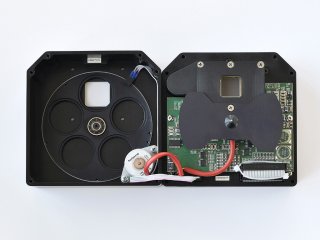
5-positions filter wheel and blade shutter inside
the G2 camera head
| Internal mechanical shutter |
Yes, blade shutter |
| Shortest exposure time |
100 ms |
| Longest exposure time |
Limited by chip saturation only |
| Internal filter wheel |
5 positions for 1.25" threaded
filter cells |
| |
6 positions for 1" bolt-secured filters |
| Head dimensions |
114 mm × 114 mm × 77 mm |
| Back focal distance |
29 mm |
| Camera head weight |
1.1 kg |
Mechanical specifications Slightly slimmer variant of the camera head without
internal filter wheel is available. The head dimensions are
114 × 114 × 65 mm
(approx. 4.5 × 4.5 × 2.5 inches).
This variant allows attaching of external filter wheel with 10
or 12 positions for D36 mm or
D31 mm filters.
G2 CCD camera with external filter wheel
attached External filter wheels for 10 filters D36 mm (left) and for 12 filters
D31 mm or with M28.5 × 0.6 threaded cells
(right)
| Head dimensions |
114 mm × 114 mm × 65 mm |
| Back focal distance |
29 mm |
| Back focal distance |
16.5 mm |
| Back focal distance from external filter wheel |
33.5 mm |
| Weight of camera head |
0.9 kg |
| Weight of camera head + external filter wheel |
1.7 kg |
Mechanical specifications Notes:
Shortest exposure time 100 ms is available on G2
cameras revision 3 and higher. Shortest exposure time of
older revisions was 175 ms.
Software Support
Powerful SIPS (Scientific Image Processing System) software
supplied with the camera allows complete camera control
(exposures, cooling, filters) with automatic sequences and
complete image calibration. SIPS also supports advanced tools like
Image Add tool with automatic sub-pixel image alignment, (L)RGB
Add tool, Image Blink tool, image filters and many more
functions.
Simple Image Manipulation System Drivers for third-party software are also available (e.g. MaxIm
DL, AstroArt, etc.). Visit the “download” portion of the
manufacturer web site for current list of available drivers,
please.
Automatic guiding
SIPS software package allows automatic guiding of the
astronomical telescope mounts using separate guiding camera.
Proper and reliable automatic guiding utilizing the
computational power of Personal Computer (e.g. calculation of
star centroid allows guiding with sub-pixel precision) is not
simple task. Guiding complexity corresponds to number of
parameters, which must be entered (or automatically measured).
And the number of necessary parameters lead to splitting of
the “Guiding” tab in the SIPS into two separate tabs.
The first one is called “Guiding setup” and it
summarizes all parameters necessary for proper autoguiding
setup.
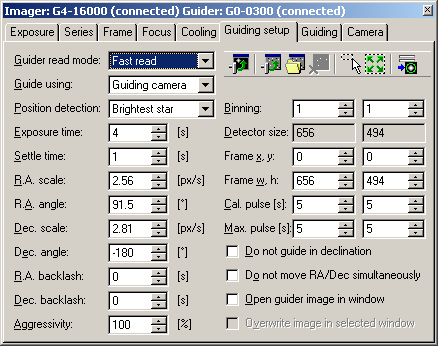
Guider setup tab of the SIPS CCD Camera control
tool The second tab called “Guiding” thereafter allows
switching of autoguiding on and off, starting of the automatic
calibration procedure and recalculation of autoguiding
parameters when the telescope changes declination without the
necessity of new calibration. Also swapping of the German
Equatorial mount no longer requires new autoguider
calibration.
This tab also graphically displays time history of guide
star offsets from reference position in both axes. The length
of graph history as well as the graph range can be freely
defined, so the graph can be adjusted according to particular
mount errors and periodic error period length.
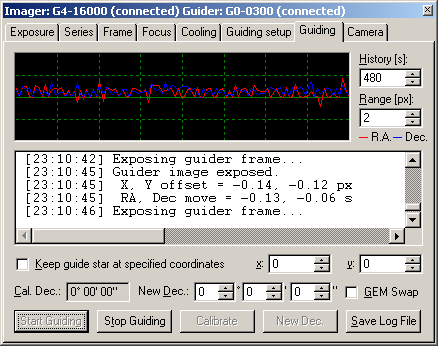
SIPS automatic guiding Complete log of calibration procedure, detected offsets,
correction pulses etc. is also shown in this tab. The log can
by anytime saved to log file.
G2 cooled imaging camera with G0 high-performance
guider Advanced reconstruction of color information of
single-shot-color cameras
Color CCD detectors have red, green and blue filters
applied directly on individual pixels (so-called Bayer
mask).
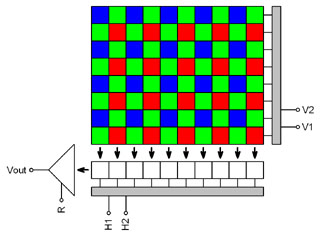
Schematic diagram of color CCD detector with Bayer
mask Every pixel registers light of particular color only (red,
green or blue). But color image should contain all three
colors for every pixel. So it is necessary to calculate
missing information from values of neighboring pixels.
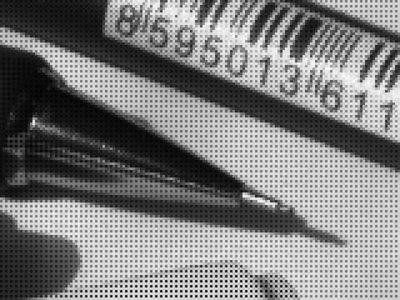
Magnified crop of raw image captured by color
camera There are many ways how to calculate missing color
values—from simple extending of colors
to neighboring pixels (this method leads to coarse images with
visible color errors) to methods based on bi-linear or
bi-cubic interpolation to even more advanced multi-pass
methods etc.
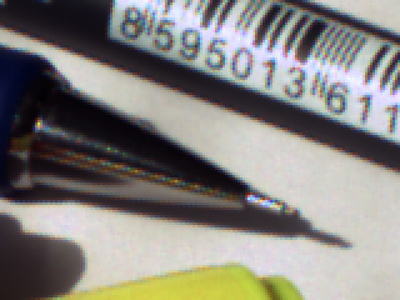
Previous image with colors calculated using
bi-linear interpolation Bi-linear interpolation provides significantly better
results than simple extending of color information to
neighboring pixels and still it is fast enough. But if the
telescope/lens resolution is close to the size of individual
pixels, color artifacts appear close to fine details, as
demonstrated by the image above.
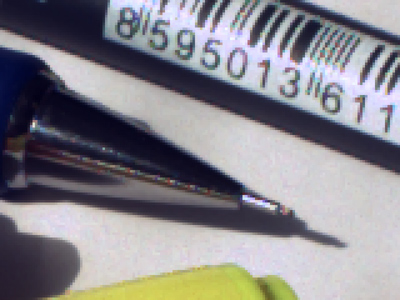
The same raw image, but now processed by the
multi-pass de-mosaic algorithm Multi-pass algorithm is significantly slower compared to
single-pass bi-linear interpolation, but the resulting image
is much better, especially in fine details. This method allows
using of color camera resolution to its limits.
SIPS offers choosing of color image interpolation method in
both “Image Transform” and “New Image Transform”
tools. For fast image previews or if the smallest details are
significantly bigger than is the pixel size (be it due to
seeing or resolution of the used telescope/lens) the fast
bi-linear interpolation is good enough. But the best results
can be achieved using multi-pass method.
Shipping and Packaging
G2 CCD cameras are supplied in the foam-filled, hard
carrying case containing:
Camera body with a user-chosen telescope adapter. The
standard 2" barrel adapter is included by default. If ordered,
the filter wheel is already mounted inside the camera head and
filters are threaded into place (if ordered). A 100-240 V AC input, 12 V DC output
“brick” adapter with 1.8 m
long power cable. 5 m long USB A-B cable for
connecting camera to host PC. A CD-ROM or USB Flash Drive with camera drivers,
SIPS software package with electronic documentation and PDF
version of User's Manual. A printed copy of User's Manual.
G2 CCD cameras are shipped in the foam-filled carrying
case (left), larger case is used if camera is ordered with
external filter wheel (right) Image Gallery
Example images captured with G2 KAI cameras.
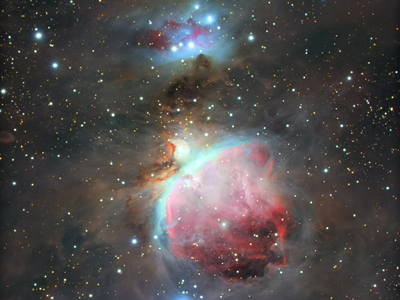 |
| Object |
M42 Orion Nebula |
| Author |
Samuele Gasparini |
| Camera |
G2-4000 |
| Telescope |
SkyWatcher 80ED + 0.85× flattener |
|
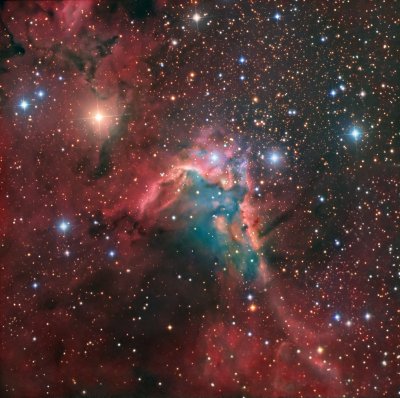 |
| Object |
SH2 155 |
| Author |
Marco Burali |
| Camera |
G2-4000 (H-alpha + OIII + RGB) |
| Telescope |
BRC 250 F5 |
|
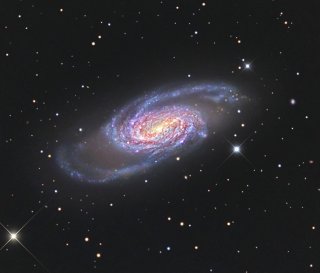 |
| Object |
NGC2903 |
| Author |
Marco Burali |
| Camera |
G2-4000 |
| Telescope |
Takahashi TOA 150 F7 |
|
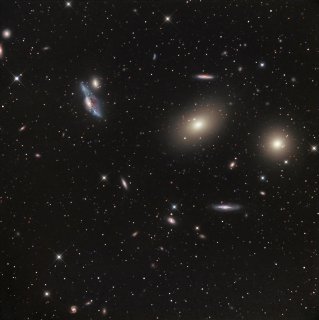 |
| Object |
Virgo Galaxy Cluster |
| Author |
Marco Burali |
| Camera |
G2-4000 |
| Telescope |
Takahashi TOA 150 F7 |
|
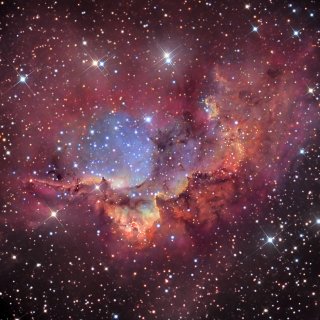 |
| Object |
NGC7380 |
| Author |
Marco Burali |
| Camera |
G2-4000 |
| Telescope |
Takahashi TOA 150 F7 |
|
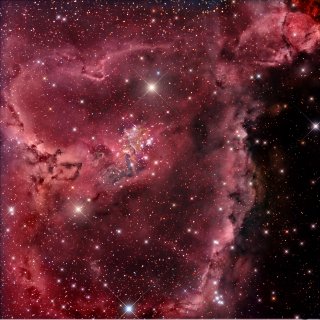 |
| Object |
IC1805 |
| Author |
Marco Burali |
| Camera |
G2-4000 |
| Telescope |
Takahashi TOA 150 F7 |
|
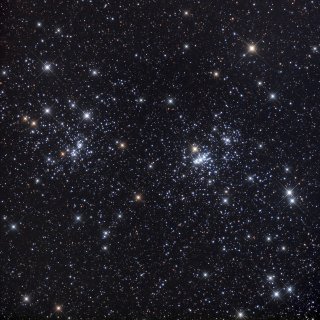 |
| Object |
NGC884 a NGC869 |
| Author |
Marco Burali |
| Camera |
G2-4000 |
| Telescope |
Takahashi TOA 150 F7 |
|
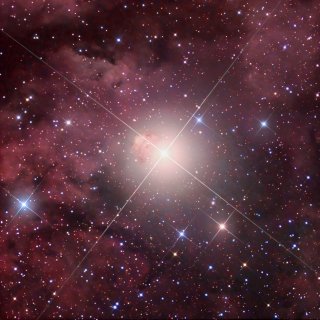 |
| Object |
Gama Cygni |
| Author |
Marco Burali |
| Camera |
G2-4000 |
| Telescope |
Takahashi TOA 150 F7 |
|
All images published with permission of their respective
authors.
| 